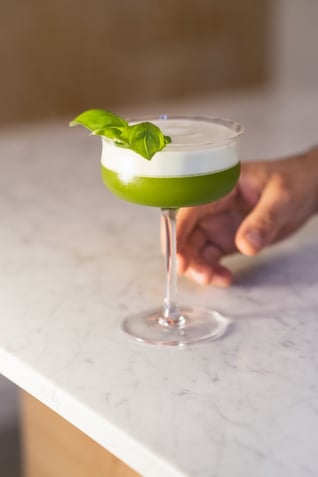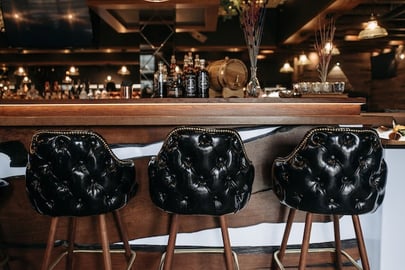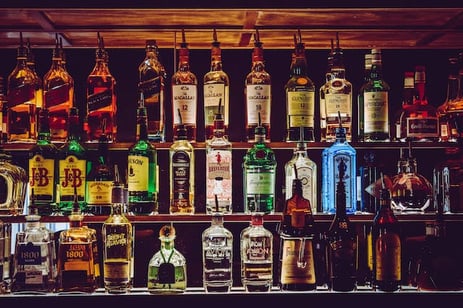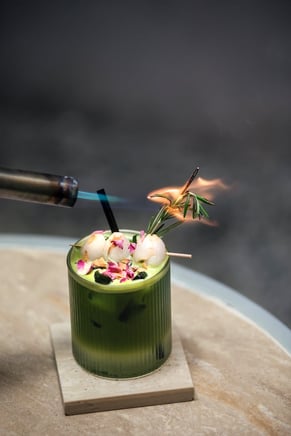Discover how top-shelf brands are shaking up the cocktail scene with innovative mixes that promise to elevate your spirits.
The Art of Selecting the Right Liquor for Your Cocktail
When it comes to creating the perfect cocktail, selecting the right liquor is crucial. The type of liquor you choose will greatly impact the flavor and overall experience of the drink. Whether you're looking to create a refreshing summer cocktail or a rich and flavorful winter drink, understanding the qualities of different liquors will help you make the best choice.
One important factor to consider when selecting liquor for your cocktail is the base spirit. Vodka, rum, gin, tequila, and whiskey are all popular choices for creating a wide range of cocktails. Each spirit has its own unique characteristics that can enhance the taste and aroma of your drink.
Another aspect to consider is the flavor profile of the liquor. Some liquors have a smooth and mellow taste, while others are bold and intense. Depending on the flavor you want to achieve, you can choose a liquor that complements or contrasts with the other ingredients in your cocktail.
Lastly, don't forget to take into account the quality of the liquor. Premium brands often use high-quality ingredients and employ precise distilling techniques, resulting in a smoother and more refined taste. Investing in top-shelf liquor will elevate the quality of your cocktails and impress your guests.
By understanding the art of selecting the right liquor for your cocktail, you can create drinks that are perfectly balanced and bursting with flavor. Experiment with different spirits and brands to discover your favorite combinations and elevate your mixology skills.
Signature Mixes: Crafting Cocktails with Premium Brands
Crafting cocktails with premium brands is a surefire way to impress your guests and elevate your home bartending game. By using top-shelf liquors, you can create signature mixes that are both sophisticated and delicious.
One popular signature mix is the classic Martini, made with premium vodka or gin. The smoothness of the high-quality liquor is enhanced by a touch of vermouth, resulting in a timeless and elegant cocktail. Another signature mix is the Old Fashioned, which features premium bourbon or rye whiskey, a hint of sugar, and a few dashes of bitters. This cocktail is a true testament to the rich flavors of top-shelf liquors.
For those who prefer tropical flavors, a signature mix like the Mai Tai is a must-try. Made with premium rum, lime juice, orange liqueur, and a splash of grenadine, this cocktail is refreshing and exotic. Another tropical signature mix is the Piña Colada, which combines premium rum, pineapple juice, coconut cream, and crushed ice for a taste of paradise.
By crafting cocktails with premium brands, you can indulge in the finest flavors and elevate your cocktail experience. Experiment with different ingredients and techniques to create your own signature mixes that showcase the best liquor brands.
Tropical Temptations: Exotic Cocktails to Try This Season
If you're looking to transport yourself to a tropical paradise, exotic cocktails are the way to go. These tantalizing drinks are packed with flavors that will make you feel like you're lounging on a sandy beach with a gentle breeze.
One exotic cocktail to try this season is the Mojito. Made with rum, fresh mint leaves, lime juice, sugar, and soda water, this refreshing drink is perfect for hot summer days. Another tropical temptation is the Margarita, a classic cocktail made with tequila, lime juice, and triple sec. The combination of tangy citrus and tequila's unique flavor creates a drink that is both sweet and tart.
For those who prefer fruity flavors, the Bahama Mama is a must-try. This cocktail combines rum, pineapple juice, orange juice, grenadine, and coconut rum for a tropical explosion of flavors. Another fruity temptation is the Sex on the Beach, made with vodka, peach schnapps, orange juice, and cranberry juice. This cocktail is as vibrant and colorful as a tropical sunset.
Indulge in these exotic cocktails to satisfy your wanderlust and bring a taste of the tropics to your home bar. With their vibrant colors and refreshing flavors, they are sure to transport you to a paradise of your own.
Classic Cocktails Reimagined with Top Liquor Labels
Classic cocktails are timeless for a reason. They have stood the test of time and continue to be beloved by cocktail enthusiasts around the world. However, that doesn't mean they can't be reinvented with the help of top liquor labels.
Take the Negroni, for example. This classic cocktail traditionally consists of equal parts gin, Campari, and sweet vermouth. By using premium gin and vermouth, you can elevate the flavors and create a Negroni that is even more sophisticated and refined.
Another classic cocktail that can be reimagined with top liquor labels is the Moscow Mule. Traditionally made with vodka, ginger beer, and lime juice, this cocktail can be taken to new heights by using premium vodka. The smoothness and quality of the liquor will shine through, enhancing the overall taste of the drink.
By reimagining classic cocktails with top liquor labels, you can bring a modern twist to beloved recipes and elevate your cocktail game. Experiment with different brands and flavors to find the perfect combination that suits your taste and preferences.
Tips for Building Your Home Bar with the Best Brands
Building a home bar is an exciting endeavor, and selecting the best brands is key to creating a well-stocked and impressive collection. Here are some tips to help you build your home bar with the best liquor brands.
First, assess your preferences and the types of cocktails you enjoy. This will guide you in selecting the essential spirits for your home bar. Whether you prefer vodka-based drinks, whiskey cocktails, or tropical mixes, make sure to have a variety of liquors that cater to your taste.
Next, do your research on popular liquor brands. Look for brands that are known for their quality and have a wide range of offerings. Read reviews, ask for recommendations, and consider trying out different brands to find your favorites.
When stocking your home bar, it's important to strike a balance between premium brands and more affordable options. While premium brands are great for crafting signature cocktails and impressing guests, having some mid-range and budget-friendly options will allow you to experiment and mix up a variety of drinks without breaking the bank.
Lastly, don't forget about mixers and garnishes. Stock up on a selection of mixers like tonic water, soda water, and various fruit juices to complement your liquors. And don't forget to have a variety of garnishes on hand, such as citrus wedges, fresh herbs, and cocktail cherries.
By following these tips, you can build a home bar that showcases the best liquor brands and allows you to create a wide range of cocktails. Cheers to becoming your own home bartender!
 In the fast-paced world of hospitality, precision in inventory management can make or break your business. Scannabar leverages advanced technology to ensure that every bottle, can, or keg is accurately tracked. By automating inventory processes, you reduce the risk of human error and ensure real-time updates.
In the fast-paced world of hospitality, precision in inventory management can make or break your business. Scannabar leverages advanced technology to ensure that every bottle, can, or keg is accurately tracked. By automating inventory processes, you reduce the risk of human error and ensure real-time updates.

 The Impact of Liquor Inventory Management on Hotel Profitability
The Impact of Liquor Inventory Management on Hotel Profitability


 Building a Strong Team
Building a Strong Team


